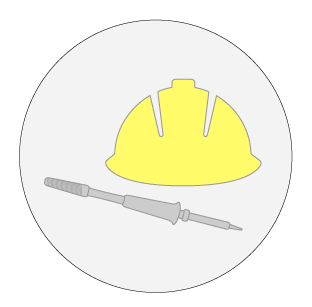
Future of Work
From re-skilling to play, how will clean energy alter the future of work?
This project imagines a future when clean energy has reached maturity as an industry. The project has two parts and starts with e-plant technology - the technique of harvesting energy directly from plants to power electronic devices - to imagine a future when a major electricity company introduces a reskilling program for its employees as their main energy production model shifts from fossil fuels to e-plants. The second part of the project imagines a future when clean energy is abundant but we are still trapped in the cycle of productivity and consumption driven capitalism whereby work-life balance is a luxury and information overload is a national threat. This part of the project focuses on the future of work through the lens of play and asks the question "Can we afford play when clean energy is abundant?" By presenting a future scenario when clean energy is abundant, yet the notions of work efficiency and production optimization still persist - through re-framing - the project aims to re-focus our attention on the underlying causes for our pursuit for clean energy technologies and generate discussion about whether clean energy is really the answer to our problems when our mindset is still fixated on productivity.
Background
Plants produce organic matter using photosynthesis. Part of this organic matter is used by the plant itself for its growth, while the rest is excreted into the surrounding soil. Bacteria in the soil breaks down this waste organic matter and this process releases electrons into the plant root's surrounding soil. But these electrons can be harvested in a carbon electrode and turned into electricity in a Plant Microbial Fuel Cell. A research group at Wageningen University in the Netherlands has experimented with a 15 square meter model and was able to produce enough energy to power a laptop. It is expected that in the near future, bio-electricity from plants could produce as much as 3.2 watts per square meter of plant growth.
E-Kaia portable charger was developed by three Chilean students in 2009 (Evelyn Aravena, Camila Rupcich and Carolina Guerrero). The charger is a small box that functions in the same way as the Plant Microbial Fuel Cell and has two electrodes and a USB slot for charging phones!

E-plant energy harvester
Future Scenario: Part 1
2030: America's largest energy company American Electricity Corporation (AEC) is the first company to commercialize e-plant technology in the world. American Plant Company is AEC's sister company that was set up to take full commercial advantage of this new endeavor.
As workplace automation continues, a substantial portion of AEC's employees face the threat of losing their job to machines. As a way to reduce impact on their employees, AEC board of directors unanimously vote to initiate a new reskilling program to help their employees smoothly transition into the new types of roles that have become available as result of e-plant technology.
Future job roles

E-plant engineer

E-plant repairer

Plant lamp designer
Three new key job roles that will emerge in this scenario are e-plant engineer, e-plant repairer and plant lamp designer.
Persona
Nick worked as an accountant for AEC for 17 years. He has two children.
He qualifies for the first class of the reskilling program at AEC which requires employees to have worked at AEC for at least 10 years and have 2 or more children to get accepted.
Nick decides to train as an e-plant repairer. He feels that he is now too old to train as an engineer or designer, and the workload for e-tree repairers is lighter. As part of his training, Nick was given the E-Plant Repair Manual by his company to refer to during practical training sessions.
Nick is a proud employee at APC

Cover of E-tree Repair Manual

An e-tree repairer's tools of trade

Nick's typical work day involves checking the day’s schedule, and visiting each tree that requires a repair.
Nick logging his work
Nick's tools of trade include the e-plant energy harvester, APC E-tree Repair Manual (part of the reskilling series of manuals), his log book, a digital version of which is also available on his phone, and some additional wiring tools.
Nick testing an e-tree

After each day, APC requires Nick to log each tree that he repaired and submit the paperwork to the Maintenance department.
